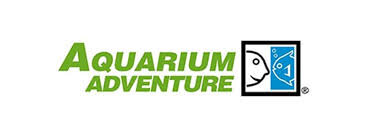Keeping a Saltwater Aquarium
Saltwater Aquariums
Beneath the churning blue waters of the sea live brilliant red, pink, purple, yellow, green and blue fish, corals and lush green plants. Brightly colored clownfish snuggle amongst anemones, while crabs and starfish creep below them.
Bring some of this rich underwater nature into your own environment with a saltwater aquarium. Due to advances in technology and equipment, it has now become easier than ever to set up a marine aquarium.
Setting up the Saltwater Aquarium
When the aquarium is in place (keep away from bright sunlight), prepare the saltwater. Mix dry synthetic sea salts with tap water and add a water conditioner. Adjust the salt level of the water (how much salt is in the water) by using an instrument called a hydrometer or a refractometer, which will measure the specific gravity or density of salt in the water. It should read approximately 1.023 at about 76° F.
Add several water circulation pumps to the aquarium in order to circulate and mix the water and provide the aquarium with currents. You want to try to prevent any ‘dead’ spots in the aquarium. Place in the bottom of the aquarium, the substrate. If you are using any type of live sand, you will NOT want to rinse the substrate. The substrate should be made of calcium carbonate so that it will help with buffering the water, maintaining an alkaline pH.
Install and begin operating the aquarium filter, heater and lights to the system. Allow the aquarium to run for 24 hours so that water can mix and clear, substrate can settle and filters, heaters and lights operate consistently. At this stage, the key ingredients, the live rock may be added.
The live rock is the most important element of the marine aquarium. Live rock is actual rubble rock from the ocean’s reefs that have tumbled to the bottom of the reef or washed up on shore due to wave action. You can also find aquaculture live rock. It is very beneficial and essential for maintaining the aquarium water quality. It is loaded with good bacteria, zooplankton and phytoplankton all necessary for the filtration process of the saltwater aquarium. The rock should be stacked to create a reef appearance and to provide lots of nooks and crannies for fish and invertebrates to call home. Make sure that the rock is stable and will not fall once your fish and invertebrates are in the aquarium.
48 hours later, this “beginning” saltwater aquarium will stabilize. The first animals to be added should be “clean-up” crew. These invertebrates (crabs, snails, urchins and starfish) are a must to scavenge excess food, debris, detritus and algae helping to maintain a pristine environment. Once they are established and doing well, then other invertebrates and fish can be added over time slowly building your marine aquarium!
